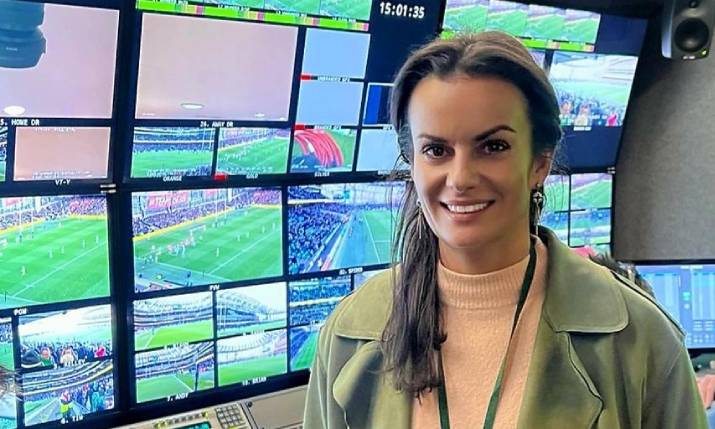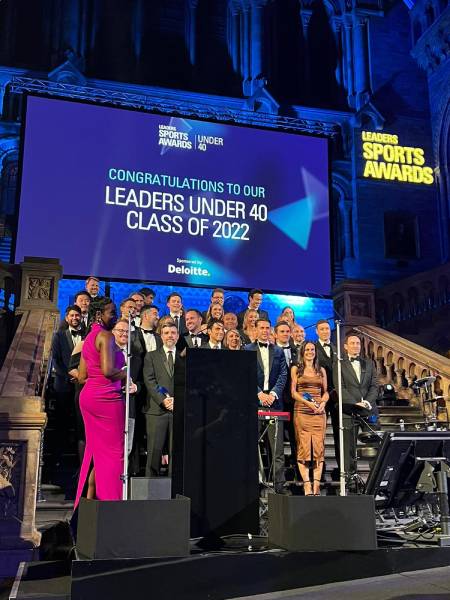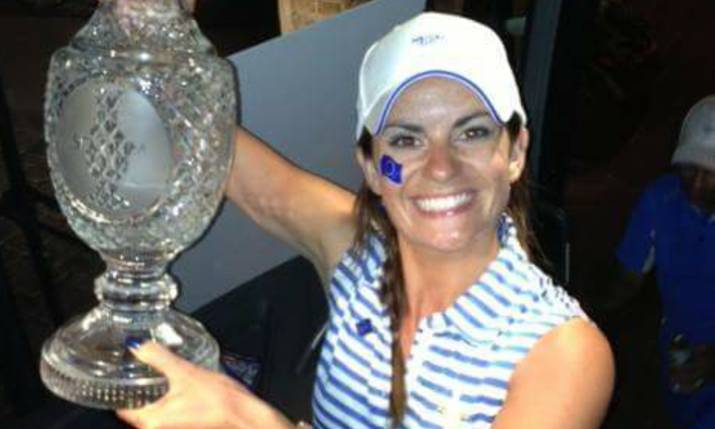Ruck, maul, tackle: Facing the challenges of sports broadcasting head on with head of broadcast partnerships at Six Nations Rugby Siobhan McCartan

Siobhan McCartan getting involved in the broadcast production of Guinness Six Nations rugby
“Live sport is exciting and so interesting,” says head of broadcast partnerships at Six Nations Rugby, Siobhan McCartan. “The challenges are endless and it’s impossible to be bored! Seeing the final products come to life is very satisfying. I think live sport bonds people together like nothing else, and working to play a part in that is special.”
“My standout memory will aways be the celebrations of Solheim Cup on the 18th green in Killeen Castle in 2011. Europe had made a massive comeback to beat USA for the first time in the history of the tournament. My role at the time was to deliver Team Europe athlete facilities and team services, embedded with the Team Europe camp working day and night, so the win was so special. There is nothing like live sport in those moments.”
McCartan has worked on the commercial side of sports for 13 years now, and although many of her roles involved working with a certain element of broadcast it was when she joined Six Nations Rugby in 2017 that her role had more focus on this area.
She adds: “Since 2020 it’s been the core of my role from working on our media rights agreements, broadcast production and broadcaster relationships globally.”

At the Leaders 40 under 40 Class of 2022, Siobhan McCartan stands proudly front right of the stage
Ruck
Looking more in-depth at the challenges in sports broadcasting, McCartan says: “I’m often the only female in the room when it comes to broadcast; years ago I felt conscious of that but it doesn’t bother me now. Overall I find it to be a collaborative industry to work within.”
She continues that the changing consumption of sport coverage is the real challenge for her: “We all know that the way in which fans and viewers consume sport is changing. Outside of sport, live TV viewership is falling, and live sport viewership is holding strong despite that. Nevertheless we need to understand current and potential viewers better and how they would like to consume our sport, then offer the best and most attractive solution to them. It’s not possible to stand still as that trend is evolving year on year.”
“Don’t be shy to ask questions and contact other women in the industry in order to gain more insight into your options. It’s a fantastic industry with great people, most of whom genuinely want to help”
Yet technology is providing the answers and Six Nations is taking full advantage of that, McCartan states: “A lot of our tech is chosen with the fan in mind; what can it deliver to the viewer? There is a huge focus on new tech to drive data on screen. We are the first and only rugby tournament to have chipped balls in play on match day (“smartballs”) that implement drive live automated data sets to broadcast during game so as viewers know immediately how long a kick was, for example. The area of player data and its provision to fans, and how close we can take them, will continue to be a key area of focus going forward.
“A lot of focus in the tech we choose is about getting fans closer to the action, whether that is behind the scenes access such as the collaboration with Netflix for the Six Nations Full Contact series or adding cameras to the pitch such as our development of a new ref-camera system with Jockeycam, the camera is worn during the game by the ref to give viewers the ref view.”
Maul
There are other tough aspects of working in sports broadcasting, McCartan notes: “You have to be ready to work hours and weekends that others may find unsociable; if something needs to be fixed there is rarely the luxury of time with live sports broadcasting.
“I need to ensure my knowledge of technical broadcast is sufficient to allow me to do the job and have the right conversations; I am not the engineer but I need to have strong knowledge on the technicalities of broadcast production none the less so that has been a learning curve I’ve enjoyed.
“Sometimes even when you test technology and process in advance, it still can glitch or fail during live match; those are difficult times. We aim for perfection in delivery and usually you are working with people of a similar mindset which helps a lot, but it’s not always controllable.”

Siobhan McCartan at the Solheim Cup, Colorado, US in 2013
Tackle
However, she adds: “I learn every day, there are new problems every day; it never stands still. There is always a new innovation to add to broadcast. I work with some great people too. I really enjoy building relationships with our broadcasters, we are usually working towards the same goal together.”
McCartan studied Science, and graduated from Trinity College Dublin, Ireland with a degree in Microbiology. After a few years working in that field she sidestepped into scientific marketing and product management, and then took a career turn into sports marketing and sports events, which has taken her to where she is now.
“My first role that involved a broadcast element was as a Solheim Cup Events executive with Ladies European Tour. I worked there for three years with a focus on Team Europe athlete services and operations which included certain elements of delivery for broadcast.
“After my role with Solheim Cup I was partnerships manager in England Hockey, general manager in Pentathlon Ireland, and sponsorship manager for Three Mobile – working on football and rugby. Although all these roles had some broadcast focus, it wasn’t until I joined Six Nations Rugby in 2017 that I had significant broadcast focus.
“Over the past few years in particular the focus on production has been huge and we’ve set up a specific broadcast team to service this area, managing broadcast for approximately 80 games per year across Six Nations, Autumn Rugby and various development tournaments,” she says.
Finally, as to what advice she would give to other women looking to move into a role in sports broadcasting like her own, McCartan concludes: “Don’t be shy to ask questions and contact other women in the industry in order to gain more insight into your options.
“It’s a fantastic industry with great people, most of whom genuinely want to help.”

